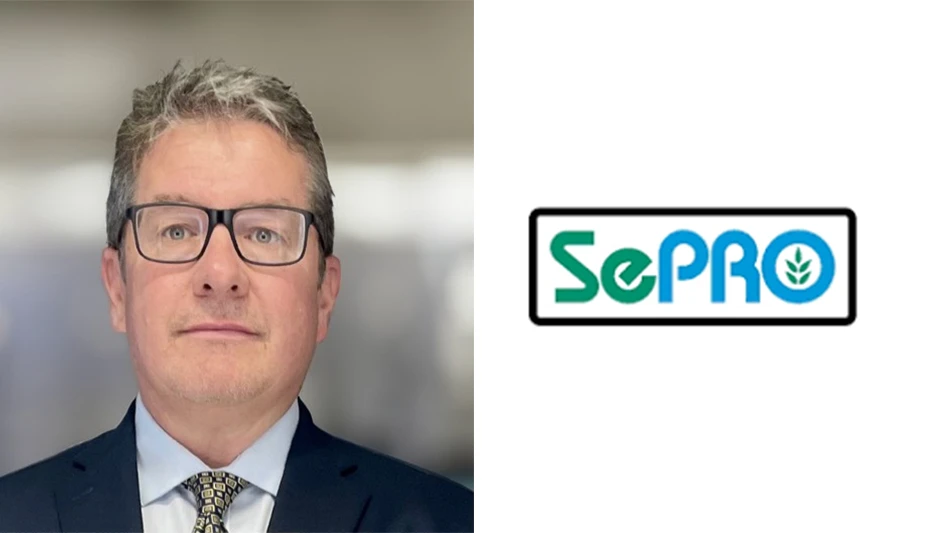
Heavy play and intense drenching. Copperleaf Golf Club experienced a pair of extremes in 2017 that tested every acre – and employee.
Located in Florida’s golf-rich southwest coast, where private golf course communities are as common as basking alligators, Copperleaf supported a record 47,000 rounds last year, according to David Dore-Smith, the club’s director of golf course and grounds maintenance since 2003.
Pushing 50,000 rounds at a private club is more startling when considering Hurricane Irma roared through the region last September, causing widespread damage to the course and grounds. Dore-Smith orchestrated a furious in-house cleanup effort and the course reopened two weeks following the hurricane. Members admired how Dore-Smith and his team handled a year that included drought conditions from January to June, followed by more than 70 inches of rain during a 3 ½-month stretch that culminated with Irma.
“We cleaned everything up in-house, which was an extraordinary amount of work,” Dore-Smith says. “When we opened up, the members that were already here were extremely thrilled the golf course was unscathed and the turf was in great condition. People were back playing golf and spending money. And members that then came down from the North were like, ‘Where did the storm hit? We heard it was bad.’”
Copperleaf quickly dried out. The course has received just 4 inches of rain since Irma, according to Dore-Smith. Low lake levels and a high volume of golfer activity defined the start of 2018. “That’s the challenge,” Dore-Smith says, “keeping up with the high expectations and still trying to fit in your agronomic and cultural practices.”
Condition
The Copperleaf team, which includes assistant superintendents David Forrey and Tiny Fry and mechanic Roman Gomez, consists of 22 workers when fully staffed. But the current southwest Florida construction boom makes assembling a complete roster challenging, even at a club with a supportive membership such as Copperleaf, which offers what Dore-Smith calls “competitive” pay, “excellent” benefits and perks ranging from employer-provided lunches to a member-driven item donation program.
The crew is responsible for maintaining 85 acres of golf turf, common areas, and Har-Tru tennis and bocce courts. The daily rush to complete tasks and support abundant play requires Dore-Smith to use industry contacts and resources as time-saving tactics.
This year’s plan involves following a fungicide program for ultradwarf Bermudagrass greens in Florida created by Syngenta senior technical representative Dr. Lane Tredway. Copperleaf has slightly over three acres of TifEagle greens.
The program, which can be found at www.greencastonline.com/programs, operates on two-week application intervals using a rotation of fungicides, including Appear, Secure, Daconil Action, Heritage Action, Briskway, Velista and Medallion. “You can’t be expected to be everywhere at every time,” Dore-Smith says. “If there is a way to try to simplify what I’m doing, I’m going to use that resource.”
A proven agronomic program and spraying preventatively helps Copperleaf present tidy playing surfaces for events and regular play, Dore-Smith adds. “It’s much easier to prevent a disease than cure it. The program has been working great. The rates are very low, it’s cost effective and it can be mixed easily with the products that I’m already putting into the tank.”

Perform
Copperleaf features a blend of homeowners. Some members stay in their homes year-round; others spend cool-weather months in Florida before returning north for spring and summer. The dichotomy means summers are anything but blasé. “What has made us competitive is that we provide a very high-end product year-round,” Dore-Smith says. “We really don’t let it slack off during the summer months.”
Almost all of Copperleaf’s 570 homeowners spend winter in Florida, a tough growing period because of limited turf growth. “It’s the busiest time and the grass literally just slows down,” Dore-Smith says. Easter represents a crossroads. If temperatures warm elsewhere, a group of members return to their northern homes. But cool temperatures in the Northeast and Midwest yielded a hectic April and May this year. The snowbird portion of Copperleaf’s season concludes with a massive member-member classic. The 2018 event, which Dore-Smith says turned out “phenomenal,” attracted 300 participants.
Intense agronomic practices and projects are completed May-September. The club closes the golf course on Wednesdays during the stretch. The Plant Growth Regulator Primo Maxx is a staple of Copperleaf’s agronomic program and usage increases with the expedited spring, summer and early fall Bermudagrass growth.
“We use it year-round on greens anywhere from 2 ounces per acre during the cooler months every week and up to 4 ounces twice a week during the summer months when things are actively growing,” Dore-Smith says. “We spray it on tees, fairways, rough. We spray it everywhere. It not only reduces mowing, but it helps primarily with clippings and cleanup. We don’t have to send another employee or machine out there to vacuum it up or blow it around.”
Condition to Recover
Even 15 years into his Copperleaf tenure, Dore-Smith walks on greens daily. The timeless tactic helps determine which greens require more attention. “You get taught on your first day of agronomic school that healthy turf makes everything easier,” he says.
A scare this past March reaffirmed Dore-Smith’s confidence in his observations and programs. After hearing compliments about the greens from an industry contact on a Thursday and observing the vibrancy again on a Friday morning, Dore-Smith left the area for a short weekend trip. On Sunday, while out of town, he received text message photos of stressed greens from a co-worker. One of Dore-Smith’s assistant superintendents and irrigation technician hand watered the greens between shotgun starts. Dore-Smith returned to the course Sunday afternoon and discovered a computer update had shut down the irrigation system both Friday and Saturday night.
Irrigation cycles resumed following the Sunday play. Dore-Smith checked the roots Tuesday. He was impressed by what he saw and sent a photo of the roots to the industry contact who praised the greens the previous Thursday. Following the Syngenta program, Dore-Smith says, allowed the turf to withstand the stress caused by the ordeal.
“We had quick recovery because the fundamentals were there,” he adds. “I had the protection in the soil and in the roots. Once that stress did occur, there was no water for two nights and no rain prior to that. With the dry air temperatures that time of year, any turf is going to stress out. But once you put back that missing element, which was water, then the response was extraordinary.”
The volume of play Copperleaf has supported this year also has been extraordinary. Members enjoyed more than 25,000 rounds through the first four months. For Dore-Smith, the year has been especially busy. The club named him interim general manager in May. Dore-Smith says the business skills needed to succeed as a superintendent, many of which he further honed at the 2012 Syngenta Business Institute, are helping him handle the interim role.
“We are the Copperleaf Golf Club,” he says. “People join here and people buy homes here because they want to play the golf course, which is evident by the 47,000 rounds last year. I get the big picture, so I need to keep this golf course in as high condition as possible because it reflects on how nice the hamburgers taste at lunch, how nice the steaks were at dinner, the home sales and increase in property values.”
Get curated news on YOUR industry.
Enter your email to receive our newsletters.
Explore the June 2018 Issue
Check out more from this issue and find your next story to read.
Latest from Golf Course Industry
- Seeking sustainability in Vietnam
- Kerns featured in Envu root diseases webinar
- Toro continues support of National Mayor’s Challenge for Water Conservation
- A different kind of long distance
- Golf Construction Conversations: Stephen Hope
- EnP welcomes new sales manager
- DLF opening centers in Oregon, Ontario
- Buffalo Turbine unveils battery-powered debris blower








